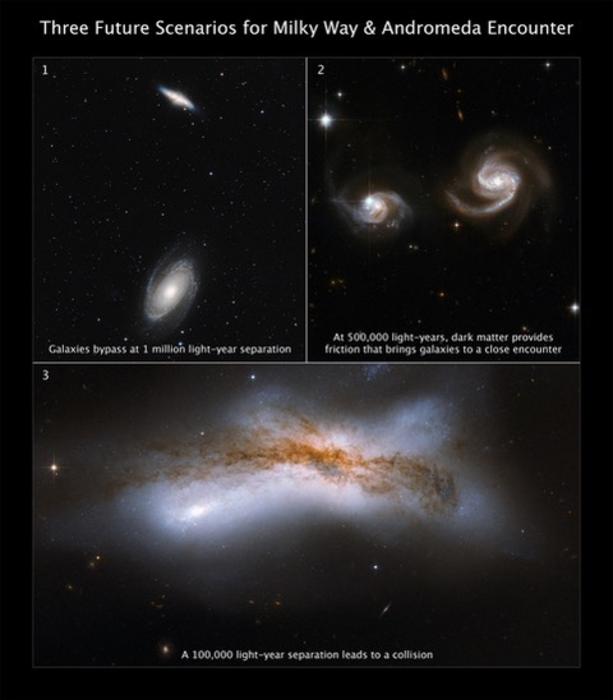More than a decade ago, scientists predicted our Milky Way galaxy and neighboring Andromeda would collide in four billion years, resulting in a “makeover” of our solar system.
Now, that is unlikely — at least within the expected timeframe.
“We see external galaxies often colliding and merging with other galaxies, sometimes producing the equivalent of cosmic fireworks when gas, driven to the center of the merger remnant, feeds a central black hole emitting an enormous amount of radiation, before irrevocably falling into the hole,” explained Durham University Professor Carlos Frenk.
“Until now we thought this was the fate that awaited our Milky Way galaxy,” he said in a statement. “We now know that there is a very good chance that we may avoid that scary destiny.”
Previous research from NASA astronomers had found that the collision with our closest neighbor galaxy would fling the sun to a new region of space, although the Earth would not be destroyed. The stars would be sent into different orbits. Right now, the galaxies are heading toward each other with a speed of approximately 62 miles per second.
But, following 100,000 simulations of both galaxies based on the latest observational data from NASA’s Hubble and the European Space Agency’s Gaia space telescopes, the authors of the study that was published in the journal Nature Astronomy found just a 2 percent probability that the Milky Way and Andromeda would crash into each other over the course of the next five billion years.
In more than half of the scenarios, the galaxies experienced at least one close encounter before they lost enough orbital energy to collide and merge. However, that would occur in some eight-to-10 billion years. By that time, the sun may have burnt itself out when it runs out of hydrogen, consuming the Earth.
But, in most other cases, the galaxies pass each other by without incident, although there is room for uncertainty.
Furthermore, the authors assert that previous research was not incorrect, but that they were able to incorporate more variables in their simulations.

“While some earlier works had focused on the interaction between the Milky Way, Andromeda, and the Triangulum galaxy, we also include the effect of the Large Magellanic Cloud,” lead author Dr. Till Sawala, of the University of Helsinki, said. The cloud is a dwarf galaxy that orbits the Milky Way. “Although its mass is only around 15 percent of the Milky Way’s, its gravitational pull directed perpendicular to the orbit with Andromeda perturbs the Milky Way’s motion enough to significantly reduce the chance of a merger with the Andromeda galaxy.”
However, the authors are already looking to update their findings with new data. The European Space Agency’s Gaia space telescope will soon provide more precise measurements of crucial factors within the galaxies, including the motion of Andromeda. Still, Frenk said the results are a “testimony” to the power of large supercomputers.
“When I see the results of our calculations, I am astonished that we are able to simulate with such precision the evolution of gigantic collections of stars over billions of years and figure out their ultimate fate,” he added.







